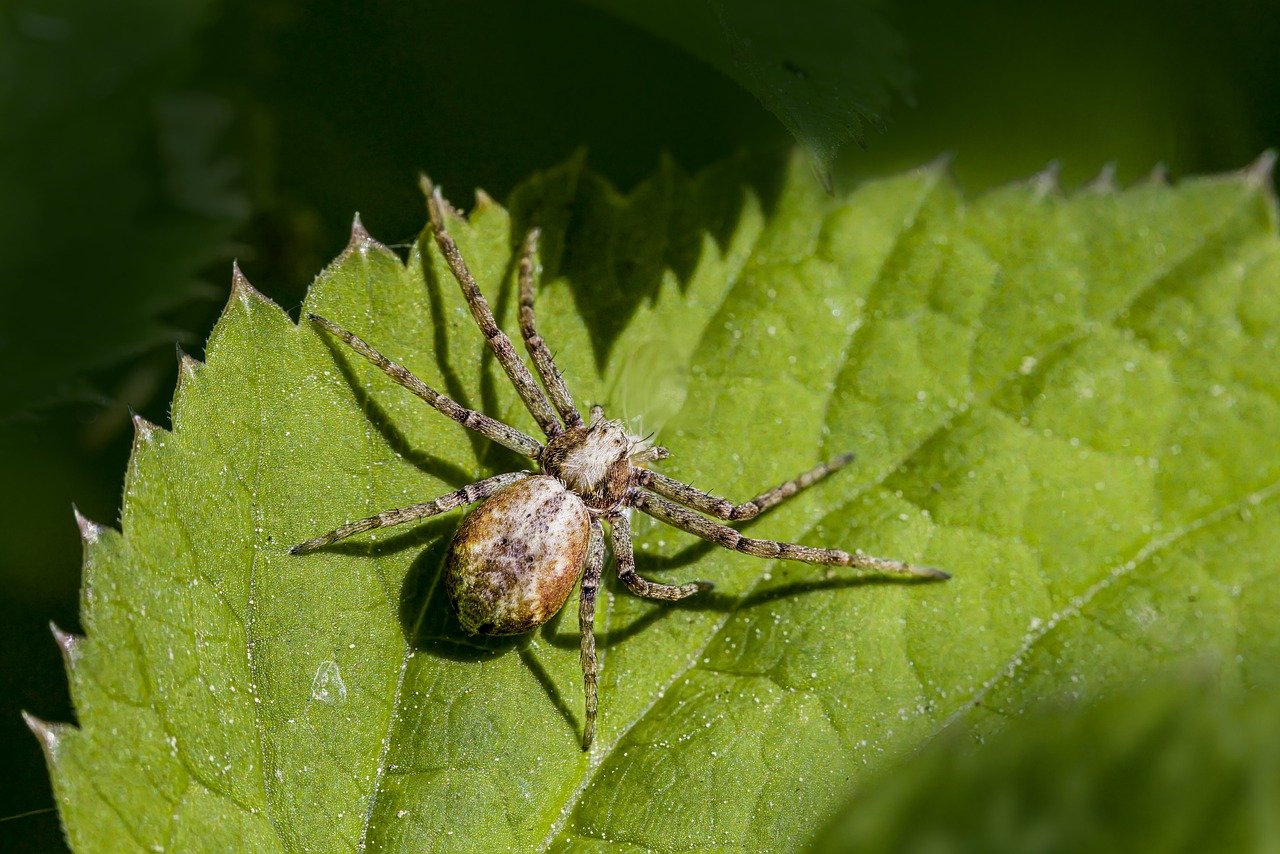The Turf Running Spider (Philodromus cespitum) is a fascinating species known for its agile hunting behavior and unique physical characteristics. Here are some key details about this spider:
Appearance
- Size: Adult Turf Running Spiders typically have a body length of about 3-7 mm (0.1-0.3 inches). Females are generally larger than males.
- Coloration: The body color can vary from pale yellowish-brown to grey, often with darker markings that provide camouflage against their surroundings. Their legs are also banded with darker and lighter segments.
- Shape: These spiders have a flattened body and relatively long legs that allow them to move swiftly.
Habitat
- Range: Philodromus cespitum is widespread across Europe, Asia, and North America.
- Environment: They are typically found in grassy areas, meadows, gardens, and forests. They can be seen on the ground, in low vegetation, and occasionally on tree trunks and walls.
Behavior
- Hunting: Unlike many spiders, Turf Running Spiders do not build webs to catch prey. Instead, they are active hunters, relying on their speed and agility to catch insects and other small arthropods.
- Movement: They are known for their rapid and erratic running, which helps them evade predators and catch prey.
- Diet: Their diet consists mainly of small insects and other spiders. They are opportunistic feeders, preying on any suitably sized arthropods they encounter.
Life Cycle
- Reproduction: Mating usually occurs in the warmer months. Males approach females cautiously to avoid being mistaken for prey.
- Eggs: Females lay their eggs in silken sacs, which they attach to vegetation or hidden crevices. They often guard these sacs until the spiderlings hatch.
- Development: Spiderlings go through several molts before reaching adulthood. They are independent from birth and disperse shortly after hatching.
Adaptations
- Camouflage: Their coloration and markings help them blend into their environment, making them less visible to both predators and prey.
- Speed: Their long legs and rapid movements are crucial adaptations for their hunting lifestyle, allowing them to chase down prey and escape threats quickly.
Ecological Role
- Predation: As predators, Turf Running Spiders play an important role in controlling insect populations, contributing to the balance of ecosystems.
- Prey: They are also a food source for larger predators, including birds and other arthropods.
Conservation
- Status: Philodromus cespitum is not currently considered endangered and is relatively common within its range.
- Threats: Habitat destruction and the use of pesticides can negatively impact their populations. Maintaining natural habitats and reducing chemical use are beneficial for their conservation.
- Conservation Efforts: Preserving a variety of habitats, including grasslands and forests, supports the biodiversity needed for these spiders to thrive.
The Turf Running Spider is an important component of many ecosystems due to its role in predation and its contribution to the diversity of spider species. Its presence in various habitats highlights the intricate balance of nature and the importance of conserving natural environments.
Visited 10 times, 1 visit(s) today
Views: 44
Subscribe to the newsletter:
